
|
|||||||||
Apulia at glance
The coat of arms of the Puglia Region consists of a Samnites shield and a golden crown. Enclosed in the octagon dressed in red and blue is the olive tree. 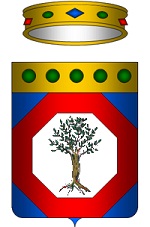 Situated at the most south-eastern tip of the Italian peninsula, Apulia territory present itself in a succession of broad plains and low-lying hills.
It is on of Italy's richest archaeological regions. From the rocky spurs of the Gargano peninsula packed with caves, inlets and cliffs, to the fertile land of the Tavoliere and on to the sunny and dry lands of the Salento, Apulia showcases nonchalantly its unique multi faced identity. As a consequence of its long and varied history, other languages have been spoken in this region for centuries. For example a Griko dialect is still spoken in a few isolated areas of the Salento region, while in a few towns in the province of Foggia is possible to listen to a rare dialect of the Franco-Provençal language called Faetar. 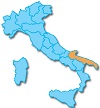 The provinces 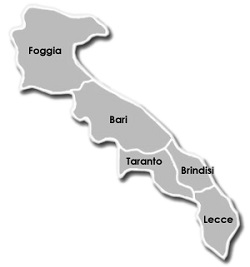 Capital : Bari - Major cities : Brindisi - Foggia - Lecce - Taranto. UNESCO World Heritage sites - Alberobello - Castel del Monte - Sanctuary of San Michele Arcangelo
 Alberobello - Province of Bari . White washed walls, conical stone tiled roofs, these characteristic homes we call 'Trulli' truly create a unique environment in tune with the surroundings.
 Castel del Monte in the province of Bari , a UNESCO Heritage Site since 1996 - One of the most enigmatic and sophisticated secular building of the Middle Ages. Maybe a hunting lodge or a palace. No one knows why king Frederick built it or if he ever lived there. Historians suggest it served as a spiritual place.
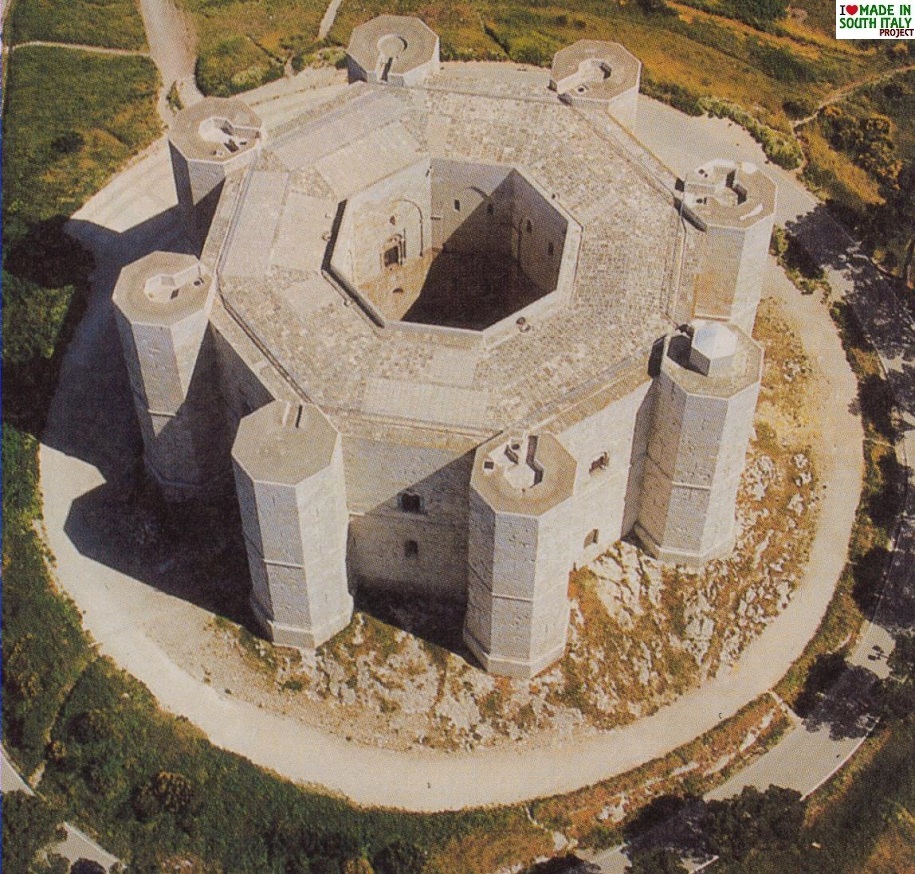 The Sanctuary of Monte Sant'Angelo in the province of Foggia, is the oldest shrine in Western Europe dedicated to the archangel Michael and has been an important pilgrimage site since the Middle Ages. The cave is part of a complex of buildings consisting of the Battistero di San Giovanni in Tumba, and the Church of Santa Maria Maggiore. The cavern, with its holy well, can be accessed from a Romanesque portal, called the Portale del Toro ("Gate of the Bull"). The doors, made in bronze, depicting episodes of angels from the Old and New Testaments, were made in Constantinople in 1076 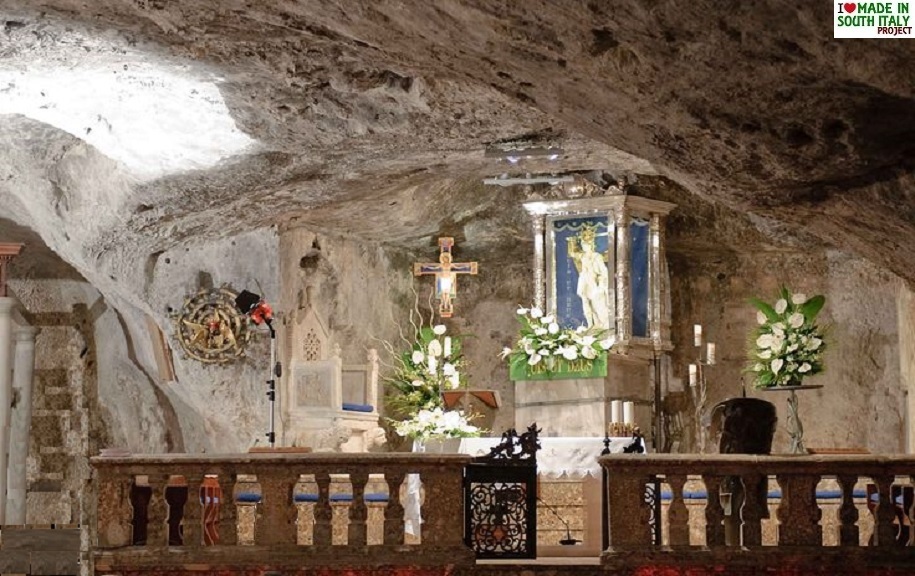 Laterza, the heart of the “Terra delle Gravine” Regional Natural Park, is roughly 50 kilometers (31 miles) away from Taranto, nestled between the Murge of Santeramo, Altamura, and the rocky caves of Massafra and Mottola. In this wild paradise there are 30 churches and many dwellings dug into the rock and tufa stone, some of which have yet to be explored. The rupestrian churches generally face onto the various gullies that merge into Via Concerie and are today the streets that flank the deep ravine. Of particular note are the rocky church of San Giorgio, the Crypt Cantina Spagnola and the Church of Cristo Giudice.
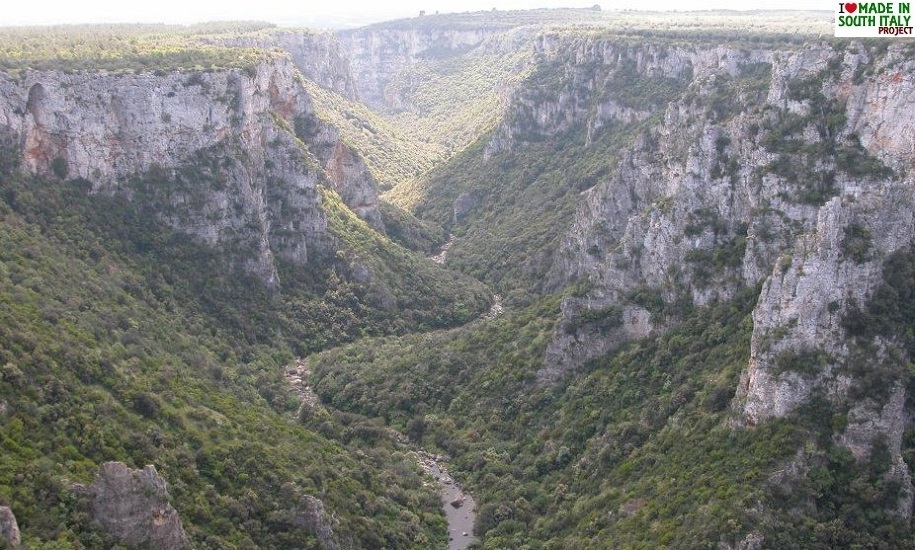 The town of Massafra and the whole Gravina territory, share the same characteristics with the famous Sassi di Matera in Basilicata. Many of the dwelling are caves dug into the calcarenitic rock itself forming prehistoric troglodyte settlements. Massafra is also known as Thebais, an ancient region of upper Egypt. Around the 5th century, Thebais became a place of retreat for Christian hermits.
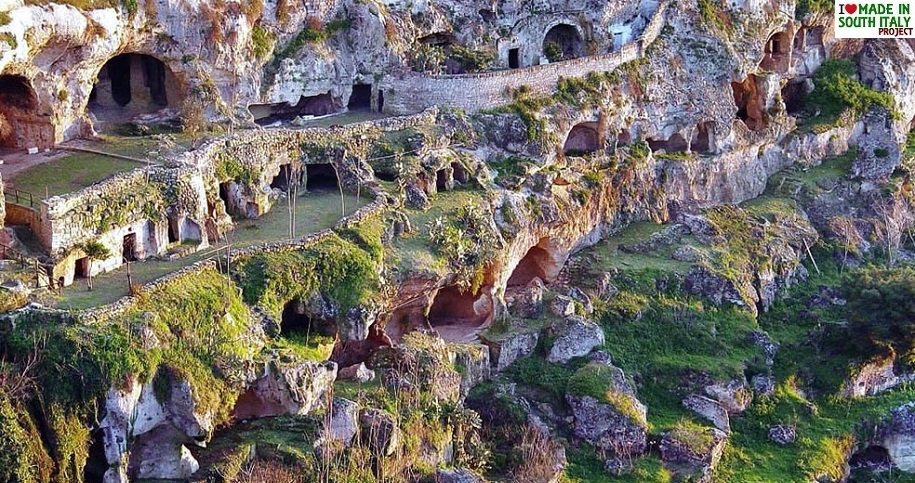 The Castellana Caves are located in the municipality of Castellana Grotte, in the province of Bari. Italy's most famous caves and perhaps the world's most beautiful. The speleological complex is unique thanks to its three peculiarities: the Grave, the White Cave and the concretions. Entrance to the main cave (The Grave as abyss) is via an enormous vertical tunnel, then comes the Black Cavern (Caverna Nera), the White Cave (Grotta Bianca) and Precipice Cavern (Caverna del Precipizio). From the natural skylight, surrounded on the surface by holm-oaks, sunbeams filters down into the darkness, continuosly changing the surrounding as it moves differently according to the time of the day and the season.
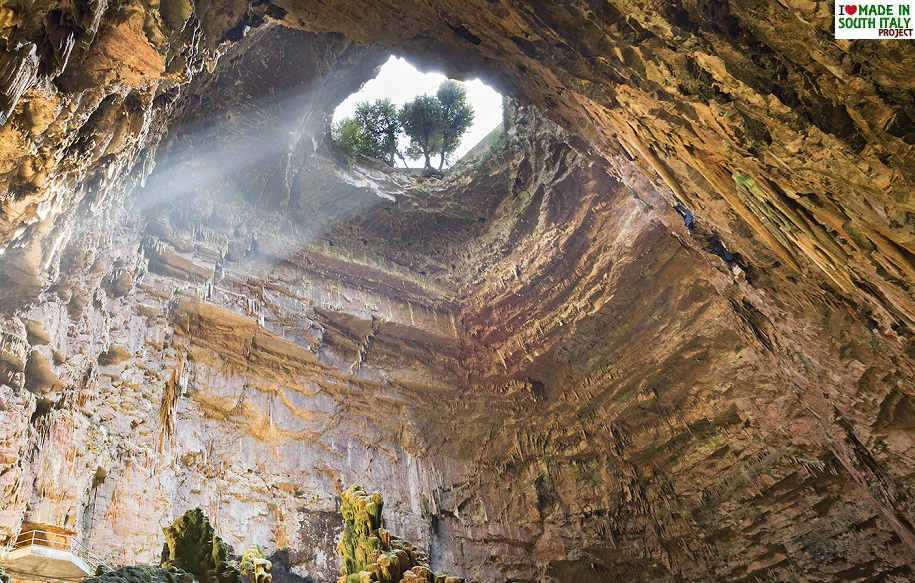 Itria Valley (in Italian: Valle d'Itria) spreads over the Province of Bari, Brindisi and Taranto. Many famous tourist destinations such as Alberobello, Martina Franca, Locorotondo, Cisternino and Ceglie Messapica are located in this area..
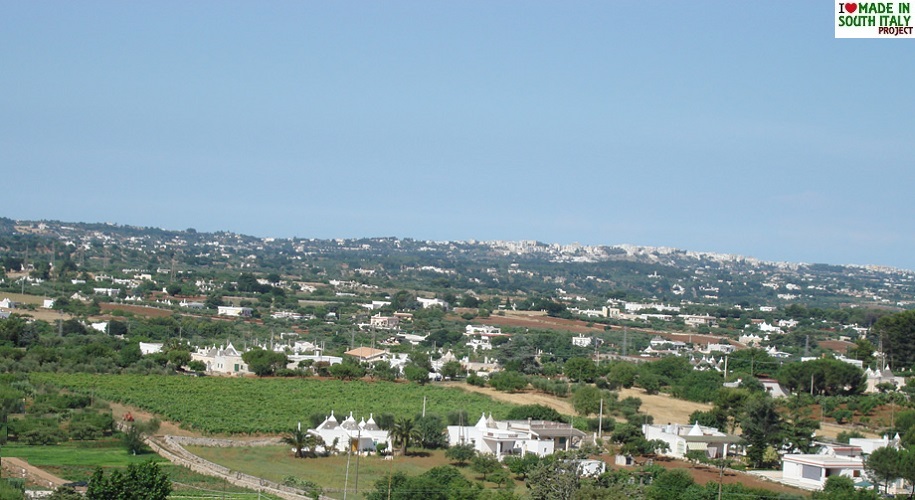 Of Greek origins, Otranto sided with Pyrrhus and of Hannibal in the wars against Rome. It is located on the east coast of the Salento peninsula and due to its strategic location it was for the Roman a very important outpost and a door to the far east. In 1480 some 800 Roman Catholics, known as the "Martyrs of Otranto," were beheaded for refusing to convert to Islam, by turkish forces sent to invade Rome.
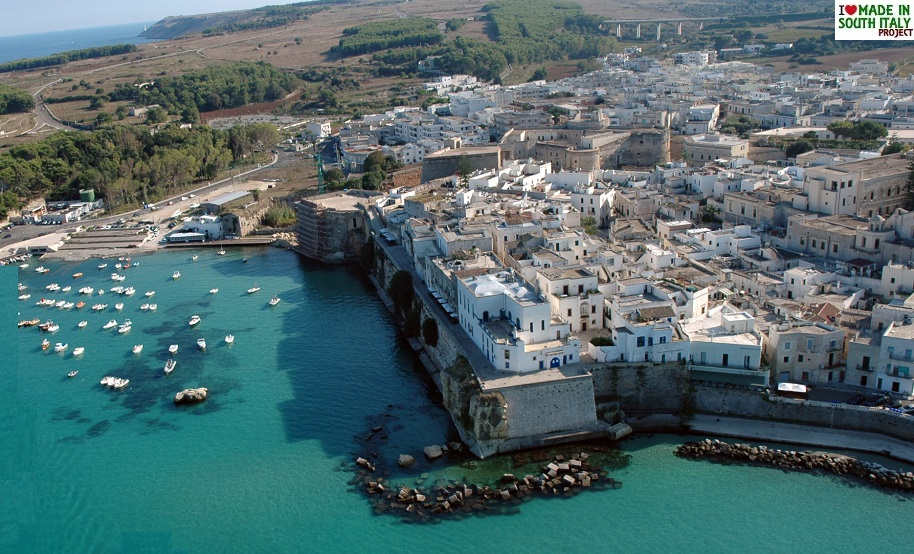 Ostuni in the province of Brindisi is located about 8 km from the nearby pristine beaches. The old town is regarded as an architectural jewel, and is commonly referred to as "the White Town" ("La Città Bianca") for its white walls and its typically white-painted architecture. Ostuni is the fifth city in Italy for the percentage of British people residents. The town is reputed to have been originally established by the Messapii, a pre-classic tribe, and destroyed by Hannibal during the Punic Wars. It was then re-built by the Greeks, the name Ostuni deriving from the Greek Astu néon ("new town"). 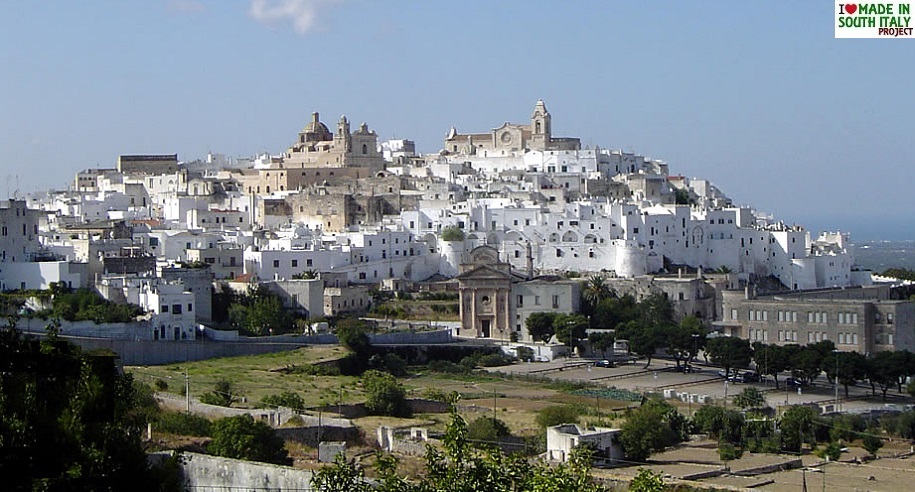 Situated on a spur of the Gargano mountain, Monte Sant' Angelo offers a picturesque view, especially in the medieval Junno quarters. The main attraction however, is the Sanctuary of St. Michael the Archangel built in the proximity of the cave where is said to have appeared. 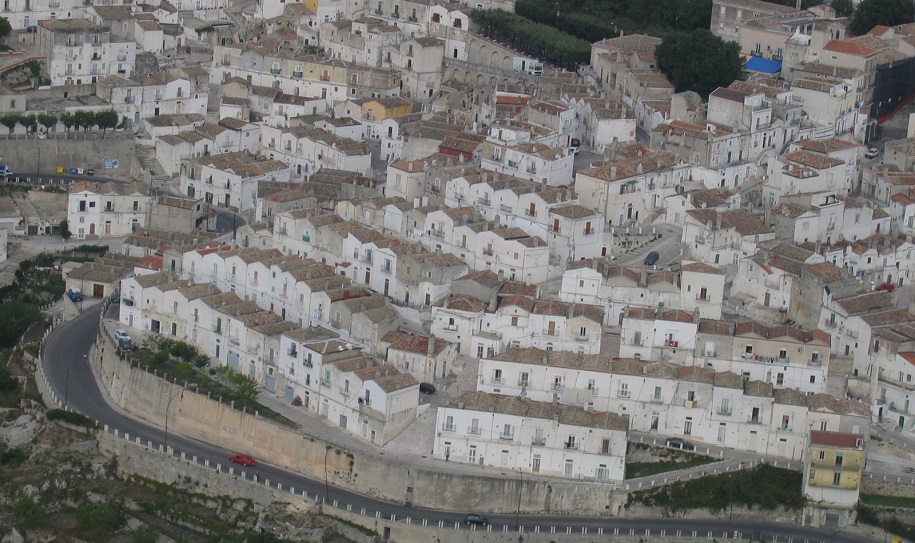 The Gargano peninsula is sub-region in the province of Foggia, a rocky spur raising from the Adriatic Sea. The coast is dotted with coves and cliffs consisting of a wide isolated mountain massif made of highland and several peaks and forming the backbone of the Gargano Promontory, partly covered by the Umbra Forest, the only remaining part in Italy of the ancient oak and beech forest that once covered much of Central Europe. It also includes the coastal towns of Manfredonia, Rodi Garganico, Peschici and Vieste.
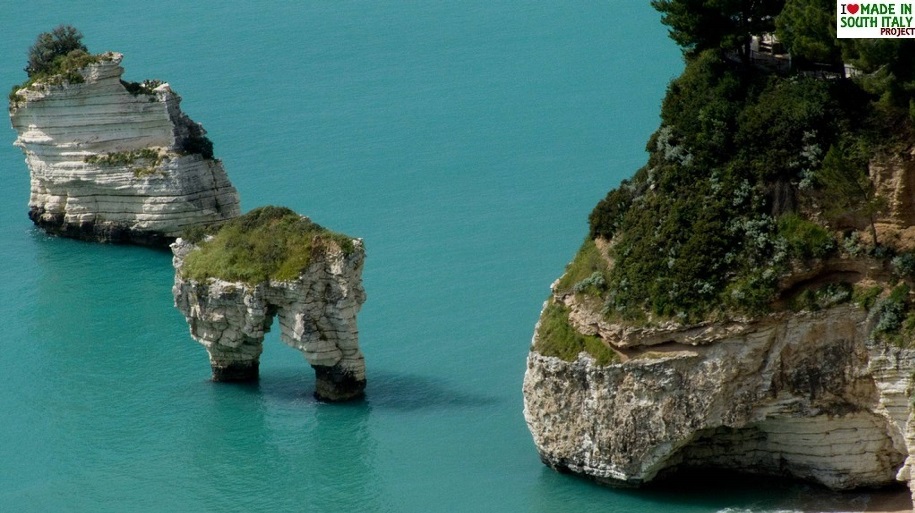 The Pizzomunno Monolith in proximity of Vieste, is a sharp edged stack standing in blue sea . In the local dialect, Pizzomunno means "the edge of the world". This 26 metre-tall dazzling white limestone monuments has been withstanding the force of wind and waters since time immemorial, alluring travelers and tourists.
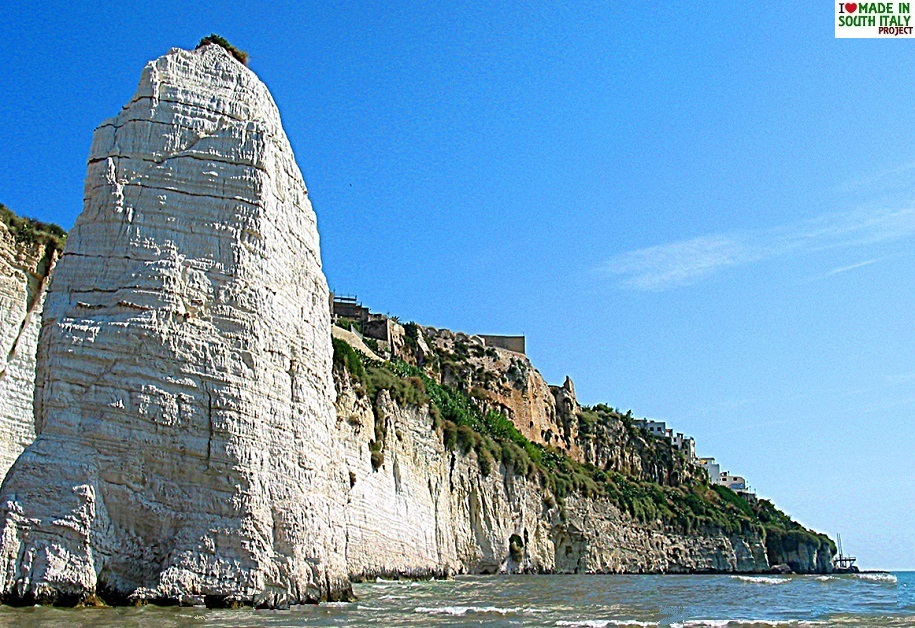 The Isole Tremiti islands of San Domino, San Nicola, Capraia , Cretaccio and Pianosa form the archipelago known as the Isole Tremiti in the province of Foggia within the Gargano national park. The islands were used for the internment of political prisoners during Benito Mussolini's Fascist regime. Two millennia earlier Augustus, founder of the Roman Empire, exiled his granddaughter Julia the Younger to one of these islands. The islands are now an important tourist attraction. Ferry services from the mainland operate from Termoli, Foggia, Vieste, Rodi Garganico and Capoiale.
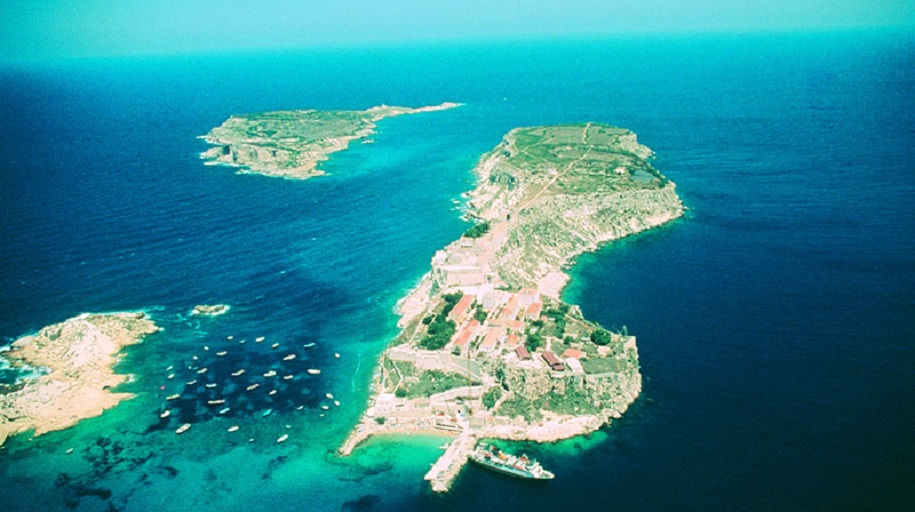 The Santo Sepolcro is one of Barletta's imposing churches . Its original Romanesque style was altered with Burgundy Gothic additions in the late 12th century while the facade is Baroque. Standing on the left side of the entrance is the famous fourth-century bronze statue of the Colossus brought to Barletta from Constantinopoli ( modern day Istanbul).
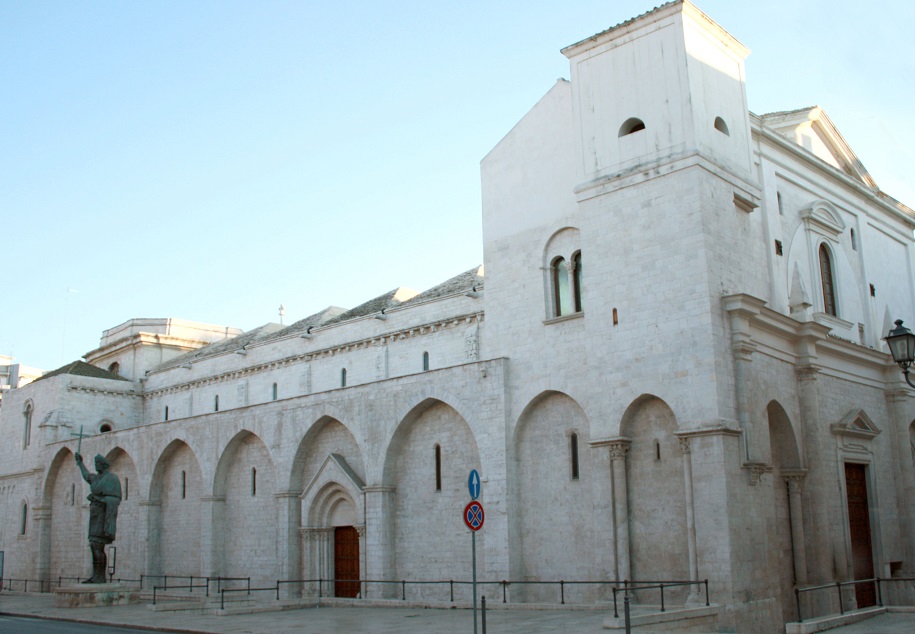 Galatina - The church of St Peter and Paul - One of Salento's few towns that still retains a Greek flavor as testimony to its origins as a Greek colony. It is the center of one of Puglia's main wine producing provinces and also famous for the old ritual of Tarantism.
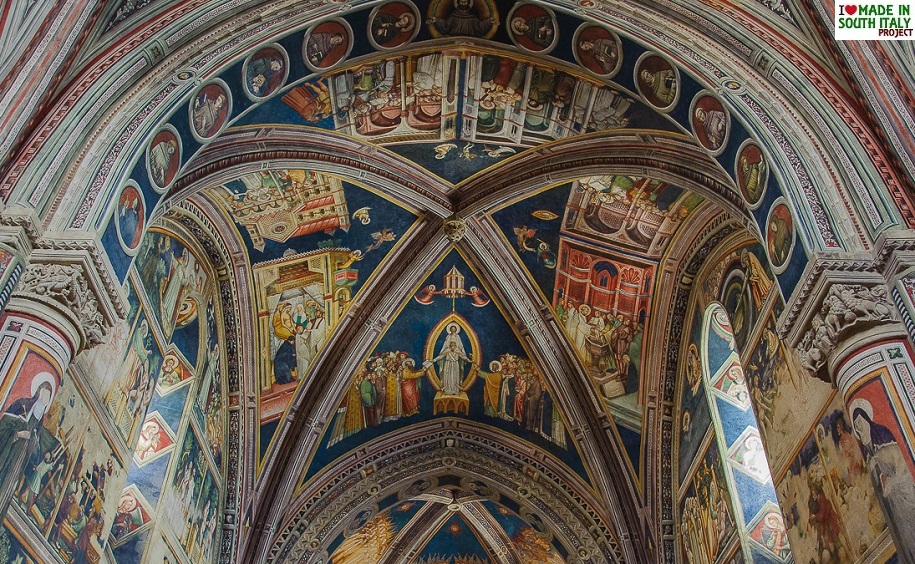 The little town of Putignano in the province of Bari is famous above all for its carnival. The colorful floats are made by local craftsman.
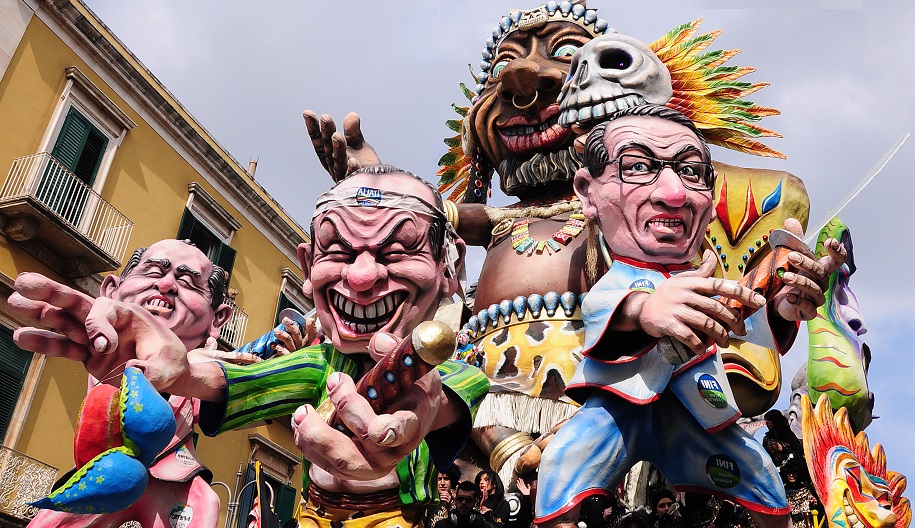 Art and Crafts
Art in Apulia has always assimilated the various lessons passed down by the many invaders and settlers of the past with their own cultures and customs. Greeks, Romans, Byzantines, Normans, Swabians, French and Spaniards, they all left their mark.
By the 1300's and 1500's it is almost impossible to refer to a specifically Apulian art. Only several centuries later we find in Apulia a new outstanding form of art which identify itself with the native inventiveness and craftsmanship of the the highly decorative Lecce Baroque Style . 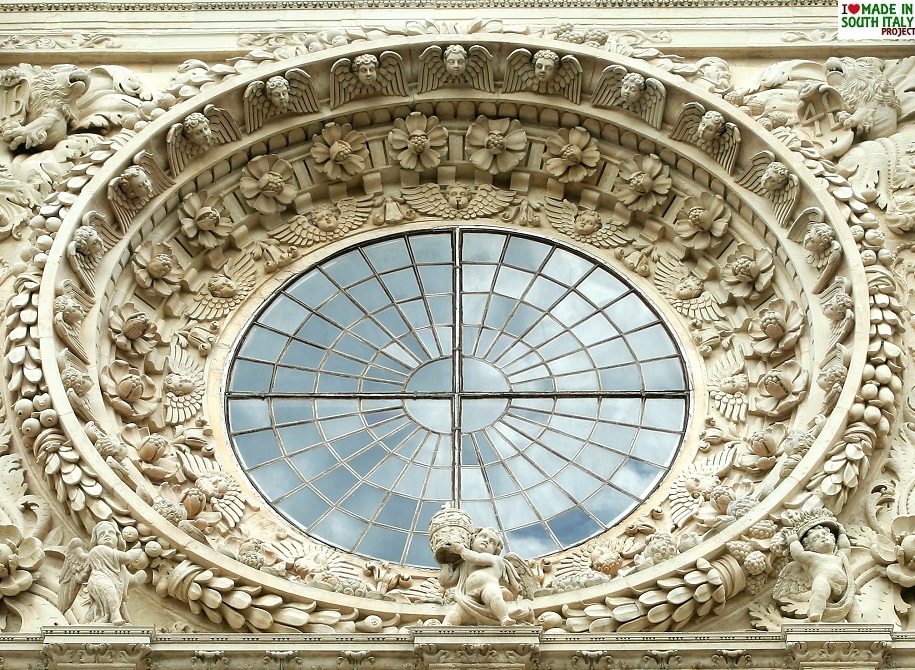 Given the wide range and variety of the 'made in Apulia' , this region may well be called a land of craftsman. From wood chairs to statues of saints, from lace to carpets and hand woven linens, the region continue in its old traditions evolving with the time.
 The most typical products are made of terra-cotta, from clay posts to dishes. A natural resource of the territory and a passion for traditions. Activity that combines art with the local economy, but also an opportunity for artistic and cultural exchange, among the peoples of the Mediterranean and the many forms of cultural expression that distinguishes them. Ceramics to suit any taste, sometimes of great refinement, are manufactured by real artists who keep inventing new forms following traditional canons.
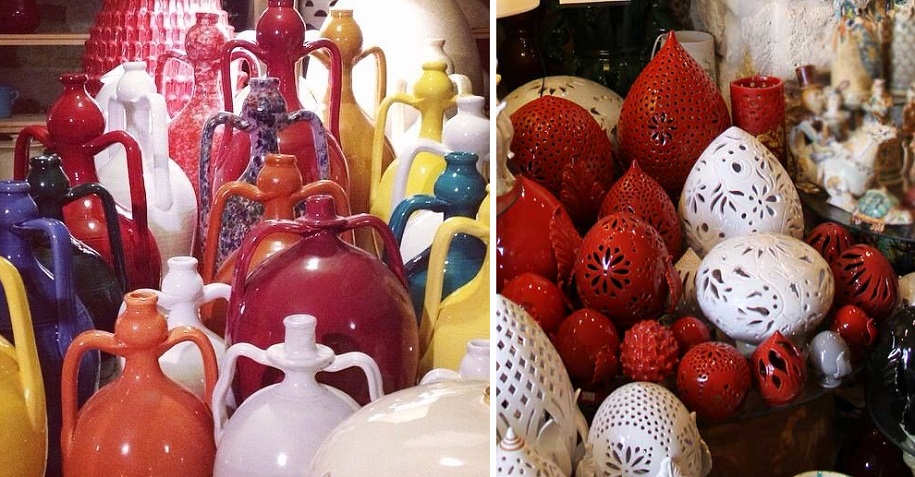 Gastronomy
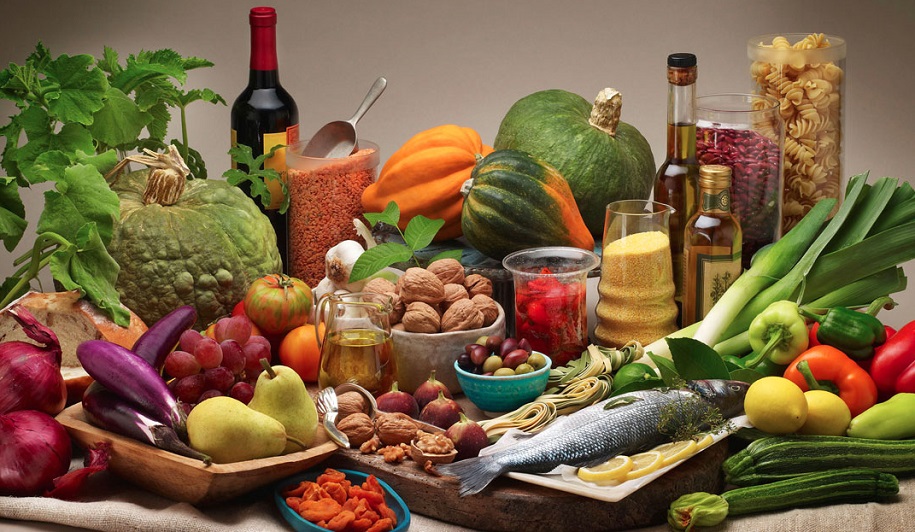 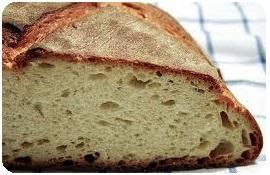 The ground is stony but produces good fruits, olive groves, vegetables, herbs, and from the sea, a vast amount of seafood. I Pugliesi (the Puglians) are known to be big pasta eaters and many dishes are exclusive to the region. The ground is stony but produces good fruits, olive groves, vegetables, herbs, and from the sea, a vast amount of seafood. I Pugliesi (the Puglians) are known to be big pasta eaters and many dishes are exclusive to the region.Oysters and mussels are plentiful and so is octopus. Brindisi is famous for its shellfish, both the seafood salads and risottos are truly memorable. The well known 'Pane di Altamura' is a type of bread made from durum flour from the Altamura area in the province of Bari. It was granted PDO status within Europe. By law, it must produced as to a range of demands, including particular varieties of wheat, certain specification of water and production method, and then have a final crust over 3mm in thickness, shape tends not to be important. Durum wheat is also employed in the preparation of both homemade past kinds as well as mass produced varieties.
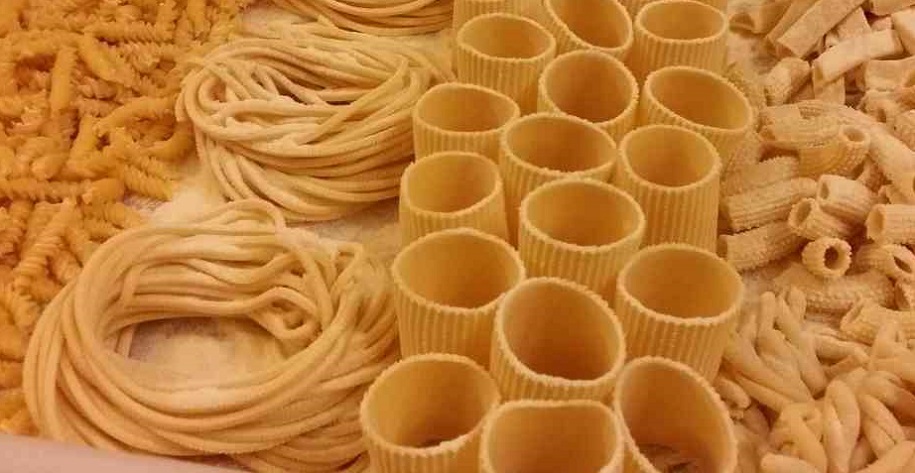 Typical Apulian dishes : Sea food salad 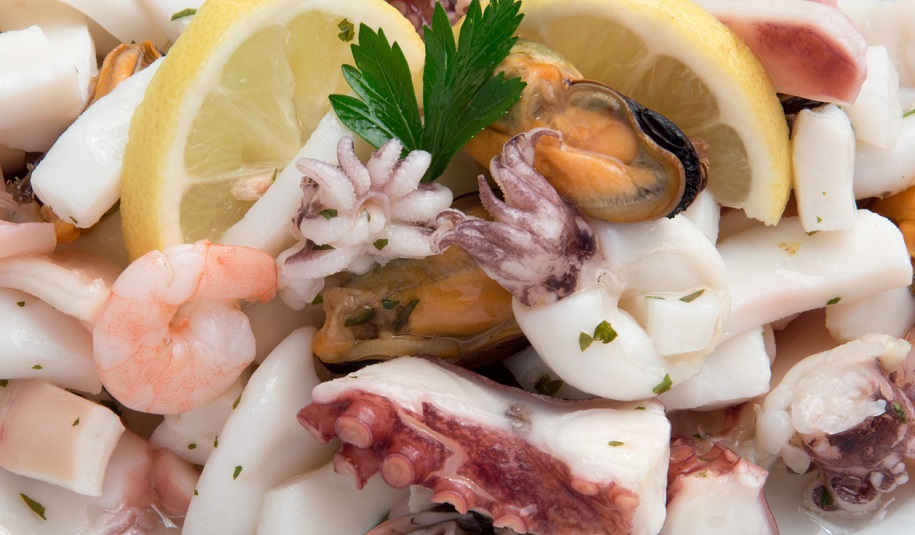 "Strascenate e cime de rape with orecchette" (Little ears home made pasta with turnip-tops). 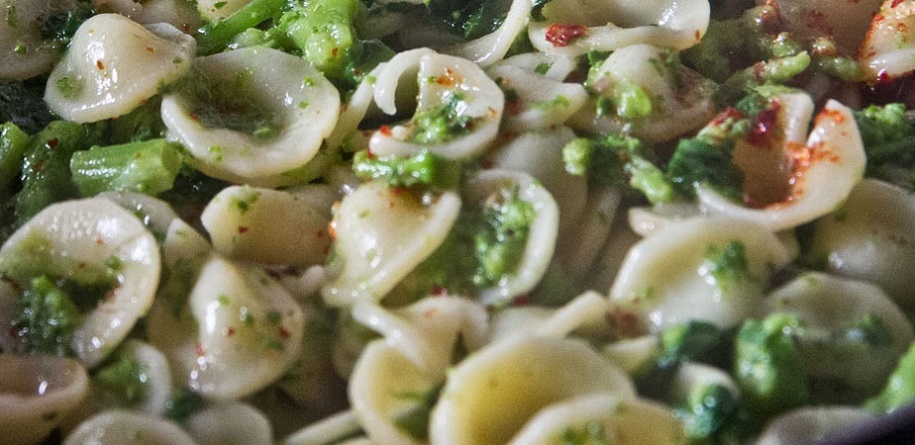 Entrail roulades (rolls stuffed with lamb entrails). 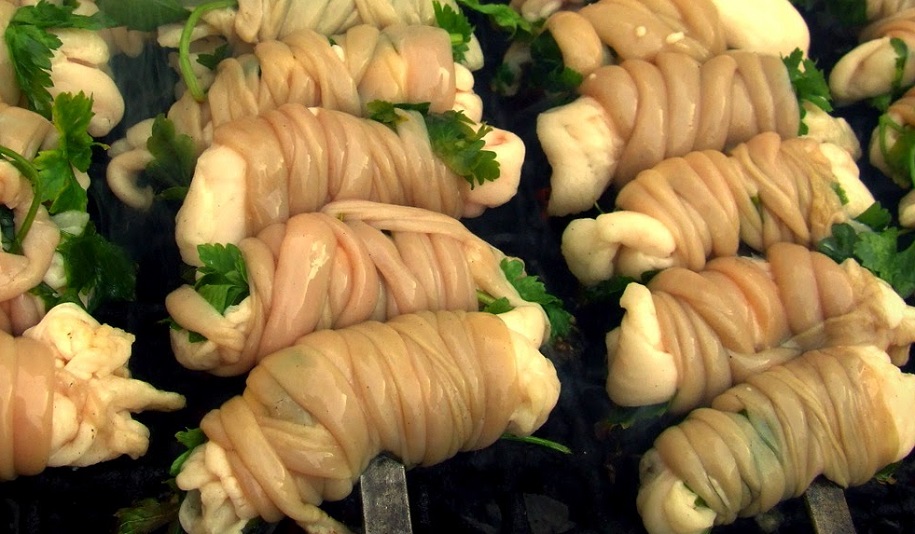 The 'Burrata' is another trademark of Puglia. This kind of soft cheese has a rich buttery taste and made to be eaten fresh. The flavor and different textures of the inside and outside make it go well with salad, raw prosciutto, crusty bread, fresh tomatoes with olive oil, cracked black pepper, or pasta. Established as an artisanal cheese, burrata maintained its premium-product status even after it began to be made commercially in factories throughout Apulia. 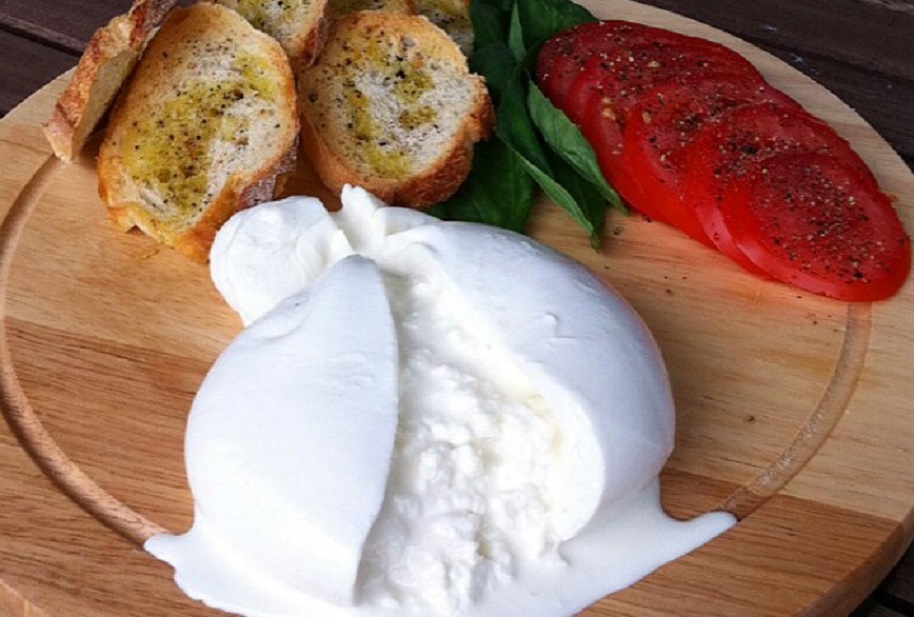 A good homemade meal is usually washed down with local wine which comes in a great varity of flavours. The province of Taranto produces strong wines which are then shipped throughout the world to blend lighter qualities.
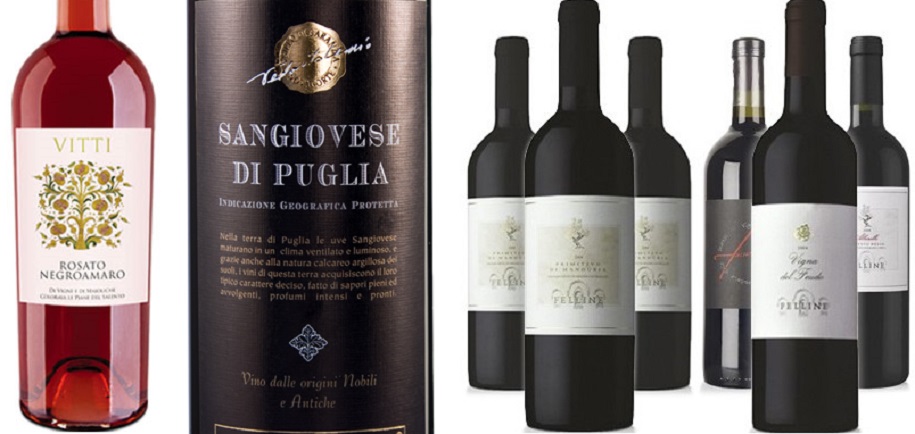 Olive oil is used in all local dishes, whether raw or cooked , giving them the particular taste of the region. Apulia is in fact Italy's biggest producer of the golden liquid with the region of Calabria standing right behind.
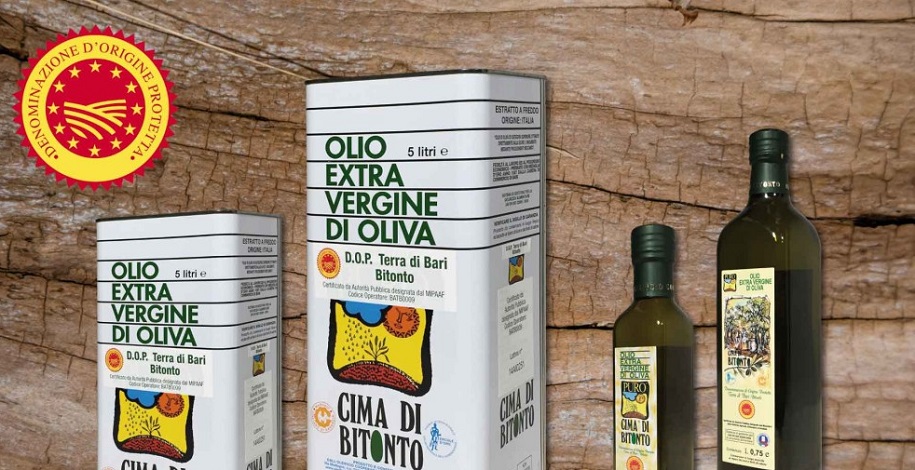 Sweets and desserts are often linked to a specific period of the year, as the celebration of a saint or a special hollyday, just as it happens in the rest of the peninsula. We mention a few : Sasanelli di Gravina ( "Small Rocks" for parties or weddings) , Pasticciotto (sweet typical of Salento made of pastry with a filling of custard and baked), Bocconotto (sweet typical of Puglia and other Italian regions, prepared in different ways depending on the region where you are), Purceddhruzzi (small Christmas sweets similar to struffoli), Sennacchiudere (another Christmas cake typical of the province of Taranto), Cupeta ( made with almonds, sesame, honey and sugar).
 Related cultural news. 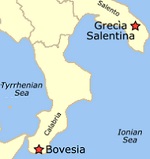 If you were to ask some of the people living in certain communities of the areas known as Salento or Calabria Grecanica about their identity, the answer could very well be : " Imesta Griki (Siamo Greci, we are Greeks)". The term "Griko" is used to indicate those groups of people who also speak , in this case, a salento/greek or calabrese/greek dialect. If you were to ask some of the people living in certain communities of the areas known as Salento or Calabria Grecanica about their identity, the answer could very well be : " Imesta Griki (Siamo Greci, we are Greeks)". The term "Griko" is used to indicate those groups of people who also speak , in this case, a salento/greek or calabrese/greek dialect. These are the descendants of the ancient people who colonized the whole Southern Italy which was then given the name of Megálē Hellàs (Great Hellas), erroneously translated by the Romans as Magna Graecia (Great Grecia). The 'Griki' have been living in Southern Italy for millennia, arriving in numerous waves of migrations. Although exposure to mass media has progressively eroded their culture and language, the Griko community has been able to preserve some of their original Greek identity, heritage, language and distinct culture. The Italian parliament recognized the Griko communities of Salento and Reggio Calabria as a Greek ethnic and linguistic minority. Stating also that the Republic protects the language and culture of its Albanian, Catalan, Germanic, Greek, Slovene and Croat populations, and of those who speak French, Provençal, Friulian, Ladin, Occitan and Sardinian. Griki villages usually have two names, an Italian one as well as a native Griko name by which villagers refer to the town. Here a few examples : Corigliano d’Otranto (Choriána or Coriána), Caprarica (Crapáreca), Zollino (Tzuddhínu),
Lecce (Luppìu), Bova (Chòra tu Vùa), Palizzi (Spiròpoli). Folk Event - The tarantella from Salento -
The Night of the Taranta , held in the Salento region, is Europe's longest and biggest musical event.
The final meet takes place during the last week of August in the town of Melpignano.  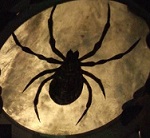 It is said that the tarantella dance originated as a cure for people affected by the bite of the tarantula, a small spider which was highly spread in the summer months. It is said that the tarantella dance originated as a cure for people affected by the bite of the tarantula, a small spider which was highly spread in the summer months.It caused a state of general sickness showing symptoms similar to epilepsy. The most frequent victims of tarantismo were the women since they were likely to be bitten by this spider more than other people, during the harvest. The "bite" of the local tarantula is not merely a physical event, but a psychic eruption, a mystery wrapped in legend, a secret of the soul. According to the popular belief, listening to the sounds of particular musical instruments (violin, accordion or tambourine) and watching certain colors (green, yellow, red) among those of the scarves waved during the rite, provoked outburst of rage that made the tarantata (possessed woman) dance. These ritual healing would often last through an entire night and end with the affected women making a pilgrimage to the church of St. Peter and Paul "of the Spiders" in Galatina to drink water from the miraculous well. The festival is associated with the concept of neo-tarantismo, which is also linked to a desire to get away from the boring and stultifying rhythms of everyday life of the modern world we live in. The musical event was born from a desire to innovate and contaminate the traditional music of the Salento, experimenting with new sounds and the traditional music of other popular cultures. The video below is indeed a classic example.
After a month of playing the crowds in the squares of the many villages in the area, fans and musicians alike congregate in the suggestive town square in Melpignano for the final 'Concertone' (big concert) ...‘Inviting the world to participate to this unique event in such suggestive location in a country renowned for its friendliness and watching everyone getting on their feet and dance for hours and then leave with a load of new musical discoveries is, for us, what it’s all about.’... Come to Puglia... and dance and sing with us...   MADE IN SOUTH ITALY today. com, intende individuare MADE IN SOUTH ITALY today. com, intende individuare operatori interessati a predisporre un’offerta di pacchetti turistici locali in coerenza con una strategia di sviluppo tesa a valorizzare le potenzialita' del propio territorio. Are You a tourist guide? Do you organize tours to northern & southern Italy? If the thematic is based on culture, history and outdoor activities, we would love to talk to you.  La vetrina ideale per promuovere i vostri prodotti e servizi sul mercato Nord Americano ma che potrebbe essere un punto di visibilità anche nei vari mercati internazionali.
Where to stay
Where to eat
Excursions
Shopping
CERCASI ALLOGGI DI QUALITA'
B & B Farm House - Masserie / Agriturismo Hotel Resort Room for rent - Affittacamere Apartment for rent - Appartamenti Houses for rent - Case in affitto MAX : 5 ESERCIZI PER OGNI CATEGORIA x REGIONE Gastronomia Locale
Selezione di Ristoranti locali Trattorie - wine bar - osterie e pizzerie luoghi del gusto - spacci aziendali - locande ed enoteche Guide Turistiche - Accompagnatore Turistico
CONOSCENZA DELLA LINGUA INGLESE centri storici - aree archeologiche - musei, città d’arte . PRODOTTI LOCALI
SOUVENIR MADE IN ITALY AZIENDE - PRODUTTORI - STRUTTURE RICETTIVE - GUIDE TURISTICHE - TOUR OPERATORI
Ai nostri visitatori piace il Sud Italia, vuoi dire loro qualcosa? Il nostro obiettivo e' quello di promuovere prodotti tipici del Sud in un contesto di marketing globale, e allo stesso tempo proporre il nostro Meridione come alternativa turistica, ben consapevoli che il successo dell'uno è essenziale per il successo dell'altro. Paesi di provenienza dei visitatori in ordine numerico Stati Uniti - Canada - Italia - Gran Bretagna - Australia - China - Germania - Francia - Nuova Zelanda - Olanda Coloro interessati ad inserire la loro attivita'/azienda/ nel sito
|
|||||||||





